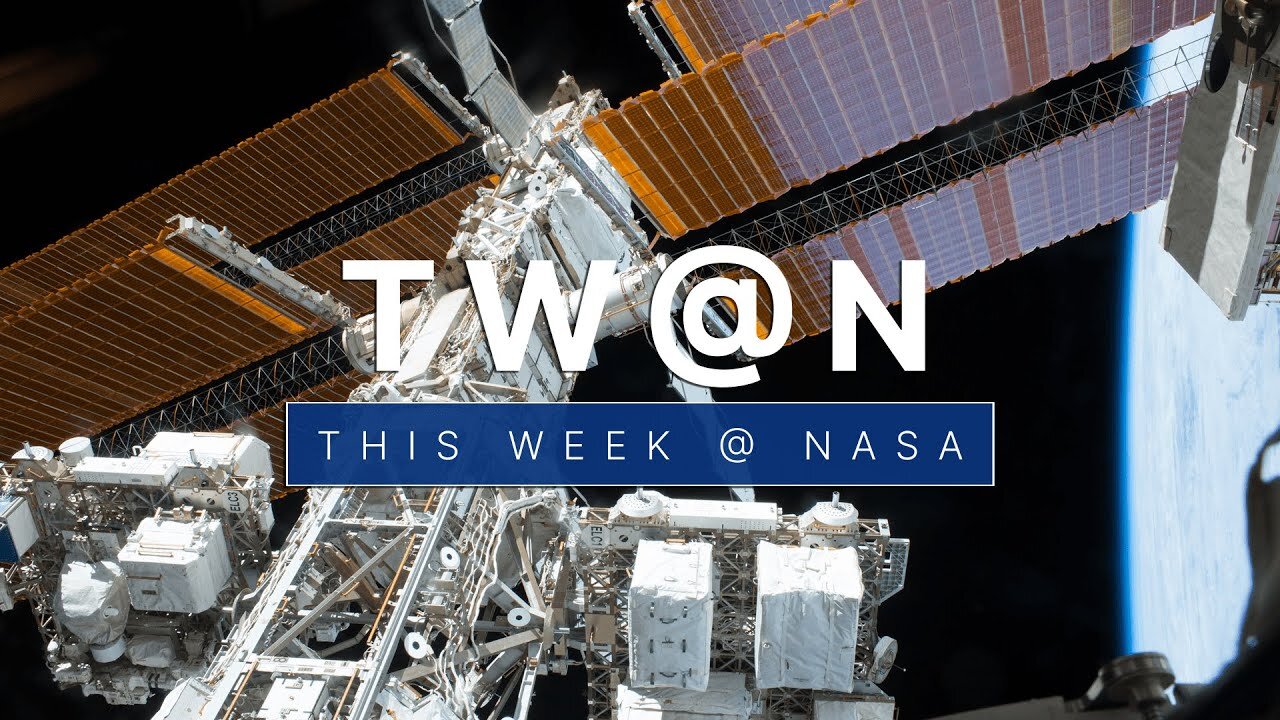Premium Only Content

Stepping Out for a Spacewalk at the Space Station on This Week NASA
Stepping out for a spacewalk at the International Space Station (ISS) is a complex and highly choreographed operation that allows astronauts to work outside the station in the vacuum of space. Spacewalks, also known as Extravehicular Activities (EVAs), are conducted for various reasons, including maintenance, repairs, experiments, and the installation of new equipment. Here's an overview of what it's like to step out for a spacewalk at the ISS:
1. Preparation: Spacewalks require careful planning and preparation. Astronauts must undergo extensive training in a large swimming pool called the Neutral Buoyancy Laboratory, where they practice working in a spacesuit that simulates the weightlessness of space. They also receive extensive training on the procedures, equipment, and tools they will use during the spacewalk.
2. Spacesuit: Astronauts wear specially designed spacesuits, known as Extravehicular Mobility Units (EMUs), which provide life support, temperature regulation, and protection from the harsh conditions of space. The spacesuit is equipped with a visor to protect their eyes from the intense sunlight and micrometeoroid impacts.
3. Airlock: Astronauts exit the ISS through an airlock, a small compartment with two hatches that acts as an interface between the inside of the station and the vacuum of space. They wear their spacesuits inside the airlock to depressurize before going out.
4. Safety Tethers: Astronauts are connected to the station via safety tethers and handrails, ensuring they remain tethered and do not drift away. These tethers are crucial for preventing astronauts from becoming untethered in the microgravity environment of space.
5. Tools and Equipment: Astronauts carry a variety of specialized tools and equipment to perform their tasks. These may include drills, wrenches, cameras, and other instruments needed for specific activities.
6. Tasks: During the spacewalk, astronauts may perform a wide range of tasks, including repairing or replacing equipment, conducting experiments, and upgrading the station's systems. They communicate with the ground control center and their fellow astronauts inside the station to coordinate their activities.
7. Limited Time: Spacewalks are physically demanding and astronauts have a limited supply of oxygen and battery power in their spacesuits. Typically, spacewalks last around 6-7 hours, but they can be extended if necessary. Astronauts need to manage their resources carefully to ensure a safe return to the station.
8. Reentry: When the spacewalk is complete, astronauts re-enter the airlock, repressurize it, and remove their spacesuits. They must go through a meticulous decontamination process to prevent any contaminants from being brought back inside the station.
Spacewalks at the ISS are remarkable feats of engineering and human endurance. They are essential for the maintenance and continued operation of the space station and provide valuable insights into the challenges of working in the extreme environment of space.
-
 LIVE
LIVE
Candace Show Podcast
1 hour agoSaturday Night Lively: What Were They Thinking? | Candace Ep 148
6,028 watching -
 LIVE
LIVE
Revenge of the Cis
2 hours agoEpisode 1449: Boo This
2,098 watching -
 1:20:31
1:20:31
Awaken With JP
3 hours agoWiping Hard Drives, Hire a Criminal Defense Lawyer - LIES Ep 79
44K20 -
 1:02:23
1:02:23
In The Litter Box w/ Jewels & Catturd
19 hours agoDEI Kills | In the Litter Box w/ Jewels & Catturd – Ep. 744 – 2/18/2025
39.2K22 -
![[Ep 611] DOGE On The March! | Guest Sam Anthony - [your]NEWS | Seditious Dems | Ukraine](https://1a-1791.com/video/fwe1/97/s8/1/q/C/C/3/qCC3x.0kob-small-Ep-611-DOGE-On-The-March-Gu.jpg) LIVE
LIVE
The Nunn Report - w/ Dan Nunn
1 hour ago[Ep 611] DOGE On The March! | Guest Sam Anthony - [your]NEWS | Seditious Dems | Ukraine
252 watching -
 1:00:56
1:00:56
The Tom Renz Show
7 hours agoThe War On DOGE Is ALSO A War On The Economy
4.95K5 -
 1:30:16
1:30:16
Steve-O's Wild Ride! Podcast
5 days ago $0.84 earnedAri Shaffir Exposes The Dark Side of Podcasting - Wild Ride #252
11.3K1 -
 1:56:29
1:56:29
The Quartering
5 hours agoAirplane FLIPS and CRASHES, Sean Duffy Slams Pete Buttigieg, & What Happened with Patriarchy Hannah
66.8K22 -
 37:08
37:08
Standpoint with Gabe Groisman
22 hours agoDOGE The UK?! With Liz Truss
26.5K9 -
 56:39
56:39
SLS - Street League Skateboarding
6 days agoHIGHEST SCORING KNOCKOUT ROUND OF ALL TIME! Felipe Gustavo, Dashawn Jordan, Filipe Mota & more...
21.7K1